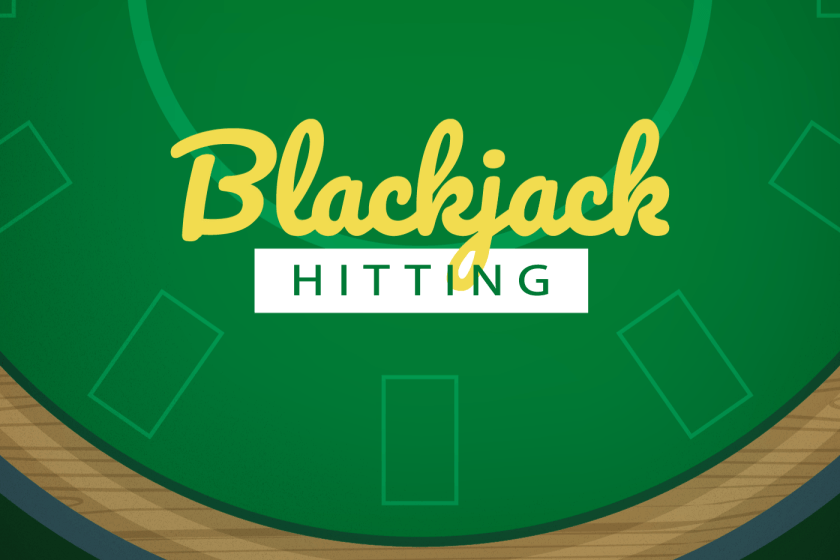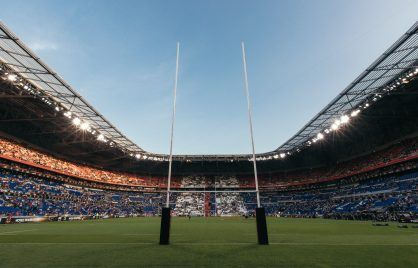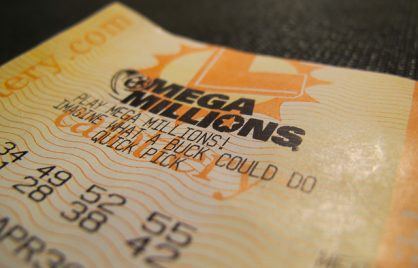When To Hit In Blackjack (And When Not To)

Taking a hit in blackjack means asking for another card from the dealer after your initial two. You should choose to hit when it’s likely that getting another card will improve your hand without going over 21. For example, you should hit when your total is less than 12, when you have a 12 or 13 against a dealer’s 2, when you have a low hand against a dealer’s pat hand, and when you have a higher soft hand against a dealer’s pat hand.
Read on for a play by play of when to hit in blackjack, and crucially, when not to.
When To Hit In Blackjack?
Below you’ll find a breakdown of the times you want to hit. You can also refer to our blackjack strategy charts, which tell you when to hit, stand, double down, split, or surrender for every possible hand.
1. Totals less than 12
If your hand doesn’t total at least 12, you need to hit until you have at least a hard total of 12. You can’t bust, so taking a hit doesn’t hurt you yet.
2. 12 or 13 against a dealer’s 2
The dealer 2 allows them to draw to some very good hands. If you have a 12 or a 13, you should hit to try and get a better hand, even though you may sometimes bust.
3. Low hands against a dealer’s pat hand
In blackjack, a low hand (total less than 17) is hit against a dealer’s pat hand (17 to 21).
One of the premises of blackjack is that the dealer will have a 10 under whatever card is turned up. A pat dealer hand then, is one where the dealer has a 7, 8, 9, 10 or ace turned up.
You should therefore assume that they have a total of 17 or more and won’t be drawing more cards (dealer’s generally have to stand on 17 or more).
This means you need to hit your hand, even if it means going over 21, to try and get to at least 17.
4. Higher soft hands against a dealer’s pat hand
A soft hand is one with an ace that can be counted as a 1 or 11. It means drawing a card can’t break it.
You should always hit a soft 17 against a dealer’s pat hand, because even if you draw a high card, you aren’t at risk of busting.
The ace gives the hands flexibility: if your next card would cause the total to exceed 21, you count the ace as 1 instead of 11. So, you can aggressively pursue a stronger hand to beat the dealer’s pat hand.
You should even hit soft 18 against a 9, 10, or ace up card.
When Not To Hit In Blackjack
Sometimes, you need to just let the dealer see if they can bust. Other times, you may need to split or double down instead of taking a hit. And sometimes, you just have to know when you can’t draw anymore. Here are the times when you don’t want to take a hit.
1. When you should surrender instead
If surrender is allowed, you want to give up your 16 against a dealer’s 9, 10, or ace, in return for half your bet, unless you have a pair of 8s. In which case you split them.
You will surrender your 15 against a dealer’s 10 or ace.
2. A total of 17 or more
Once you reach a total of at least hard 17, you have done all that you can do. It’s time to step back and hope that Lady Luck is on your side, no matter what the dealer has for an up card.
3. Against a dealer’s bust card
If the dealer has a 2 through 6 up, and the odds are they have a high card underneath, then there is a good chance that they will have to draw and probably bust.
So, when a dealer has a 2 through 6 up, you will generally stay on any card that will bust you, meaning you stop at hard 12.
The one exception being hitting the 12 and 13 against a dealer 2, which we discussed earlier.
4. When you should split a pair
If you have a pair, then you may split them. You can get a breakdown of when to split pairs in our in-depth article, but the important things to remember are you always split aces and 8s, you split 4s if you are allowed to double split hands, and you never split 10s.
5. When you should double down
Read our article to understand when to double down in blackjack. But for now, remember that you can double down when your card totals 11, when you have a soft 16, 17 or 18, and when you have a hard 9 or 10.
When Does The Dealer Have To Hit In Blackjack?
In blackjack, the dealer will draw until they have at least 17. They will stand on 17 and above, and hit anything below that.
Some blackjack casinos will hit if the dealer has soft 17, others won’t. The rules vary based on the specific house rules of the casino. We prefer games where the dealer doesn’t hit on soft 17.
How To Signal Hitting In Blackjack
Signaling that you want to hit in blackjack is usually accomplished by lightly scratching next to your cards. In games where you hold the cards, you simply scratch the cards near your bet, making sure you don’t bend them.
FAQs About Hitting In Blackjack
Should I hit or stand on 16?
If the dealer has a 7 through ace up, you should hit your 16. If not, then you need to stand.
Do you hit a 13 against a 2?
2s are tricky. You need to hit both your 12 or 13 against a dealer 2.
Should I hit on 14?
Hit against a dealer’s pat hand of 7 through ace, and stand on a dealer’s breaking hand of 2 through 6.
Should you ever hit a 17?
You need to hit a soft 17, but you should never hit a hard 17.
Should you hit a 16 against a 10?
The simple answer is yes, you should hit a 16 against a 10, but this is one of those hands that is so close to going either way. The best thing you can do is surrender if allowed.
If you absolutely feel like you need to stand, I hereby absolve you. If you look around the layout and see a lot of small cards, then maybe you will be ok standing. But as a new player, it’s probably best to stay consistent and hit it.


